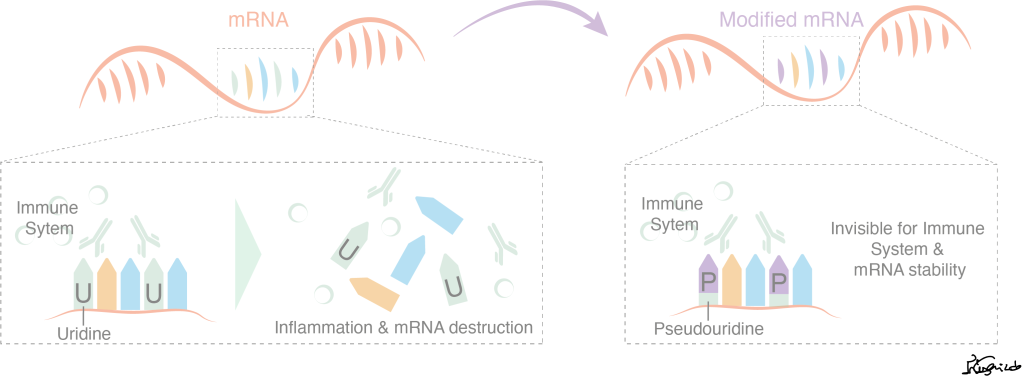The life-saving success of mRNA COVID-19 vaccines draws collective attention to a molecule called RNA and its therapeutic potential. Today we celebrate the birthday of Katalin Karikó, , who, alongside Drew Weissman, was awarded last year with the Nobel Prize in Physiology or Medicine for their groundbreaking findings concerning nucleoside base modification and mRNA interactions with the immune system.
Coming from Kisújszállás, Hungary, Katalin Karikó has been enamoured with the beauty and complexity of nature since early life. Her scientific journey has been far from a smooth ride. However, fuelled by curiosity, persistence, and resilience, Katalin Karikó turned her dreams into reality, saving millions of human lives and paving the way for the future of medicine. Let’s reflect on the scientific odyssey that has propelled mRNA to the forefront of modern medicine.
In 1961, scientists discovered messenger RNA (mRNA), a middle man between stable genome (DNA) and creation of proteins. As they learned to produce mRNA in a tube and deliver this mRNA to cells, a challenge arose – the mRNA was short-lived, prompted cells to recognize it as an invader and triggered a defence response – inflammation. This raised a puzzling question: our cells have mRNA, and they are not inflamed, so what was the difference?
The breakthrough happened at a photocopying machine at University of Pennsylvania, US, where Katalin Karikó and Drew Weissman joined forces. Determinant to find out why would mRNA tigger an immune response, they fed immune cells with various types of mRNA: mitochondrial, bacterial, their lab-made mRNA, mammalian mRNA, bacterial tRNA (transfer RNA – a special kind of RNA that helps making proteins), and mammalian tRNA.
Their eureka moment came when they noticed that the last three types did not cause much trouble – in fact, they barely provoked the immune response. What made them special? It turned out to be all about modifications in their building blocks.
Here is the twist: the lab-made mRNA lacked these modifications. One troublemaker stood out – uridine, one of the four building blocks of mRNA. When left unmodified, it caused all the fuss. By tweaking it to pseudouridine, this not only stopped the inflammation, but also made mRNA more stable and better in protein production.

In essence, Katalin Karikó and Drew Weissman modified the mRNA to make its job effectively and even gave it a little upgrade along the way. This discovery marked a turning point, unleashing the incredible potential of mRNA in medicine.
The implications extend beyond COVID-19 and other infectious diseases, offering a novel approach for cancer. This Nobel Prize celebrates not just a discovery but a transformative leap in medical science, opening exciting possibilities for the future of mRNA therapeutics.
Katalin Kariko is undeniably a remarkably scientist whose research has saved millions people worldwide. Yet, she transcends the realm of scientific achievement, serving as an inspiration to countless young individuals, particularly researchers, navigating a challenging journey to realize their dreams – a path often hindered by obstacles beyond their intelligence and hard work.
If you would like to know more about unlikely journey of Katalin Karikó, read her autobiography “Breaking through. My life in science”.


ambergris caye luna realty real estate
allegheny county real estate Pretty! This has been a really wonderful post. Many thanks for providing these details.